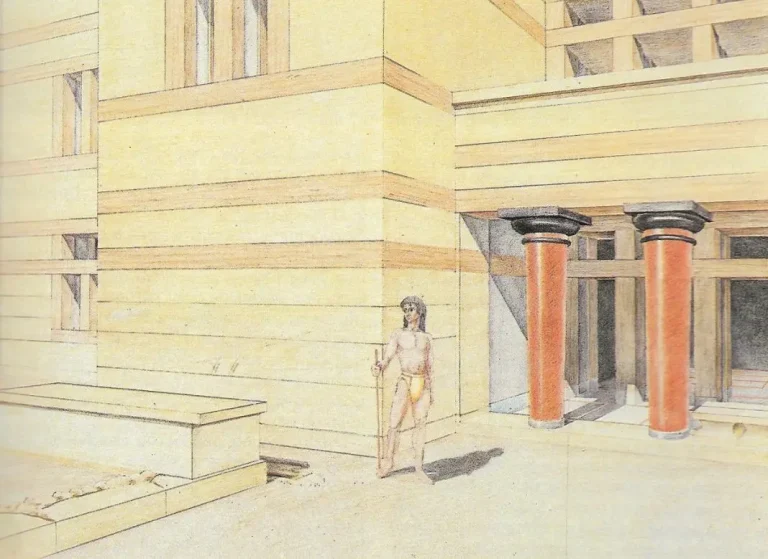
The palace, originally built as a summer retreat for the Knossos kings, is located in present-day Archanes, which was a former municipality in the Heraklion regional unit of Crete.
Since 1966, the Greek Archaeological Society, under the supervision of Yannis Sakellarakis and Efi Sapouna-Sakellarakis, has been excavating the site. Previous excavations uncovered an array of artifacts including ashlar blocks, limestone plaques, stucco floor tiles, kouskoura slabs, blue marble flooring, carved concave altars, and frescoes dating primarily from the Middle Minoan period.
The recent excavation in the northernmost part of the palace revealed the use of gypsum in architectural features such as pilasters, multi-doors, and entrance ways, providing the palace with a shimmering effect. The term "gypsum" is derived from the Greek word "gypsos," meaning "plaster." Gypsum occurs naturally in flattened, often twinned crystals, as well as transparent, cleavable masses known as selenite.
Evidence also suggests the presence of a sanctuary within the palace, as indicated by the limited remnants of stone vessels discovered. Among these remnants are a crystal vessel, a grey/leucolite vessel, an incised steatite vessel, and various obsidian fragments. The abundance of obsidian, despite its uncommon use as a tool in Crete during the YMI period (around 1600 BC), implies its ritualistic significance in this particular location.
During the excavation, other interesting artifacts were uncovered, including a fragment of a bronze buckle, the foot of a Mycenaean goblet, a Doge of Venice coin, and a 1963 US coin. Moreover, fragments of conical cups and earlier "egg cups" revealed disturbances in the layers, suggesting unauthorized "excavation" by the owners of the house built above the palace.
Overall, the study provides valuable insights into the architectural techniques and ritual practices at the Minoan palace in Archanes, highlighting the use of gypsum and the significance of various artifacts discovered on-site.
Header Image Credit: Ministry of Education